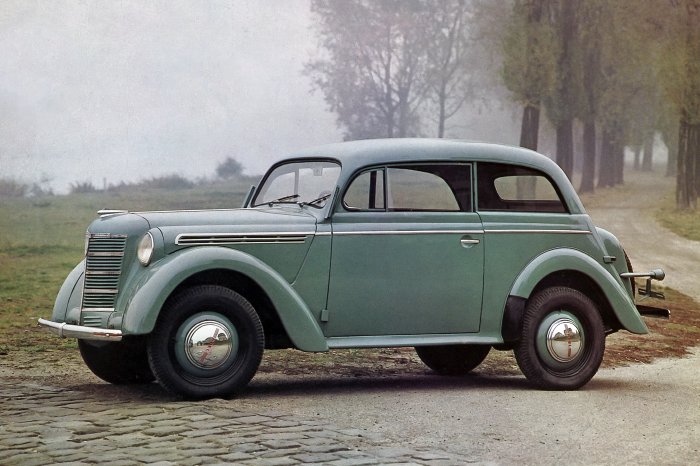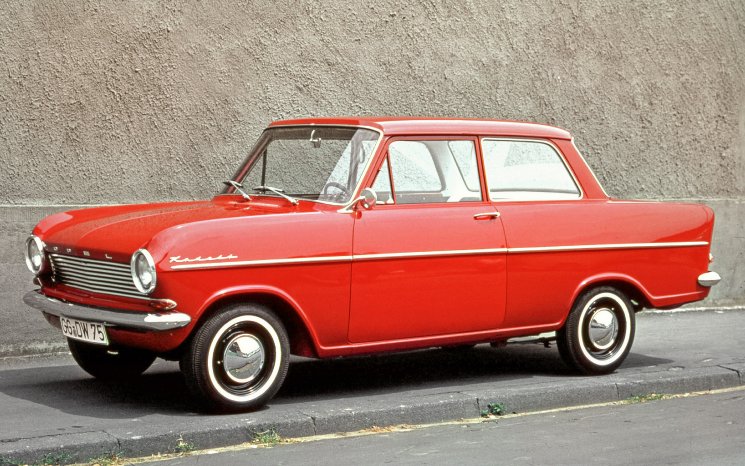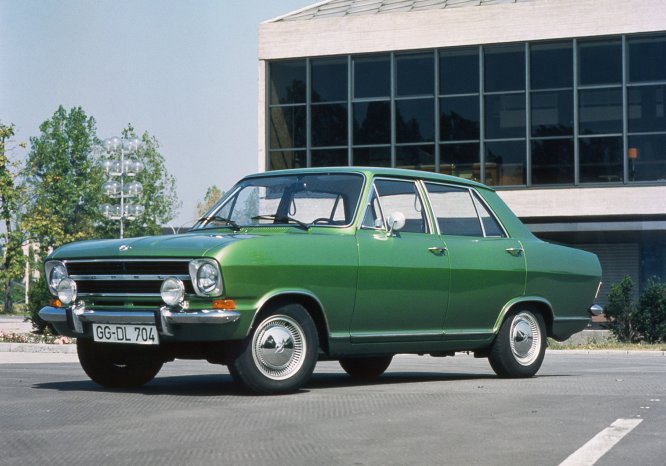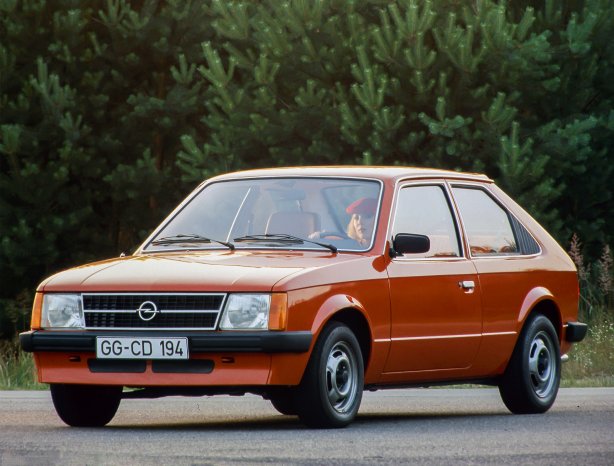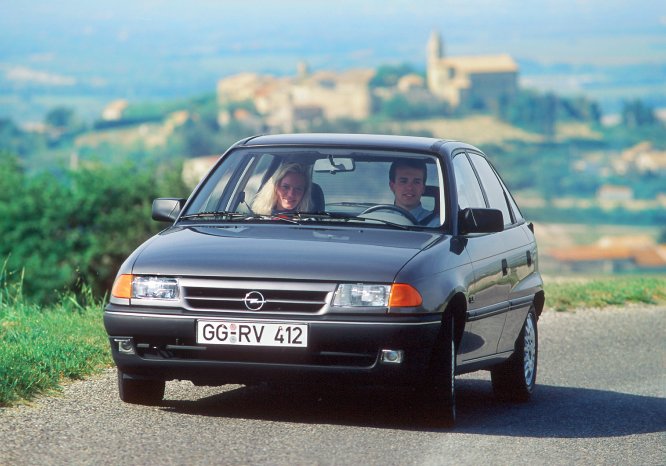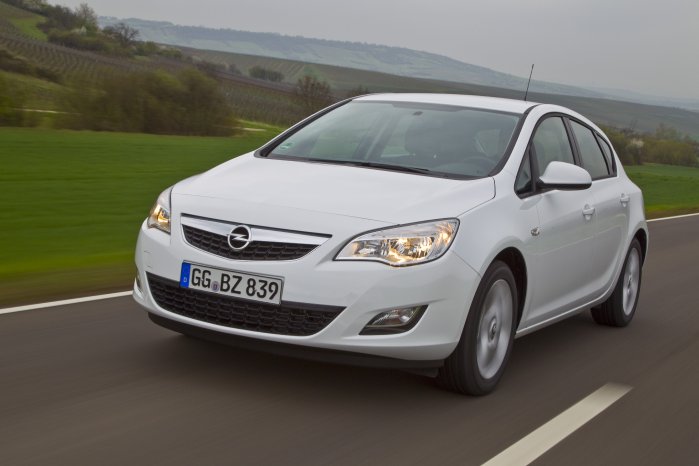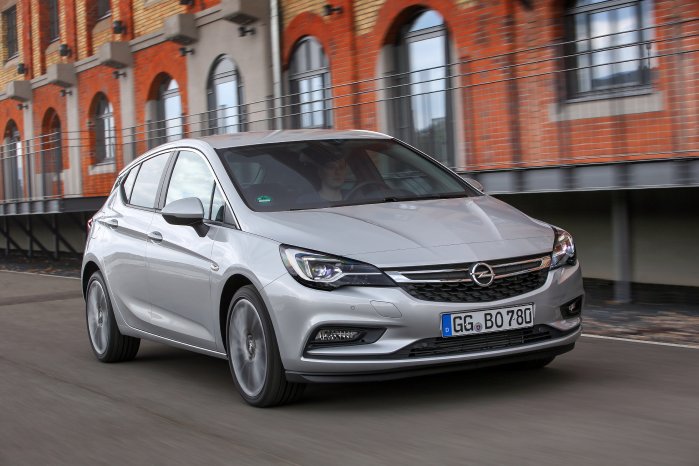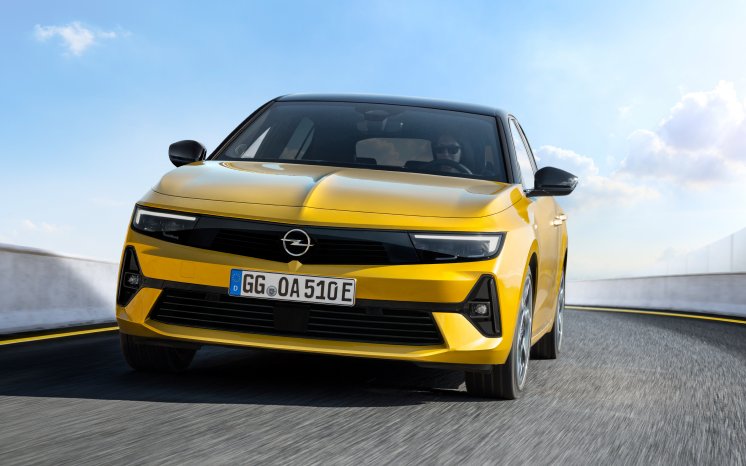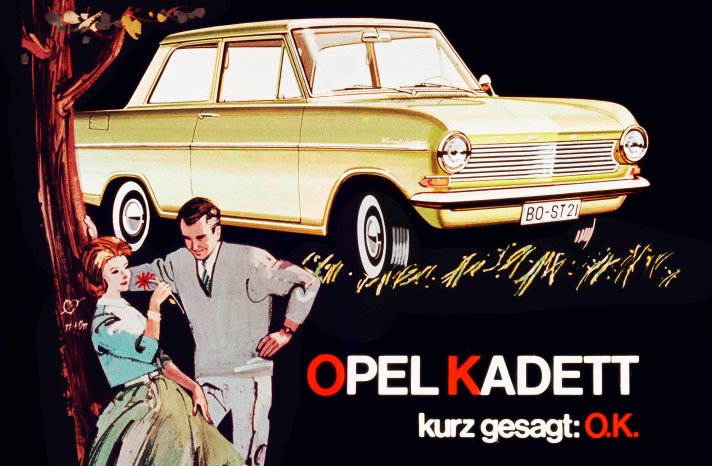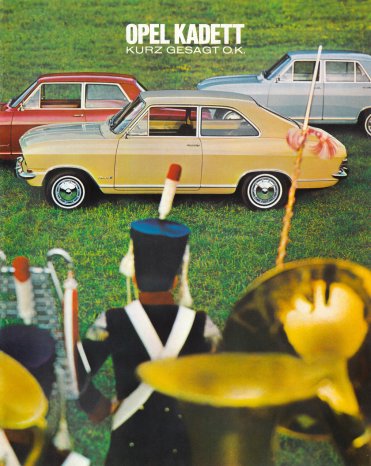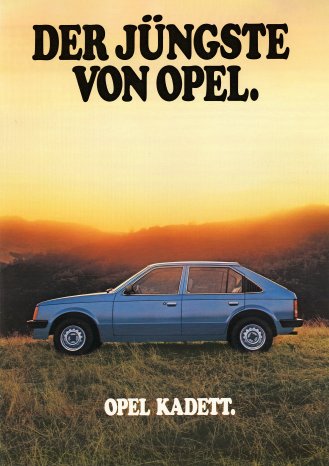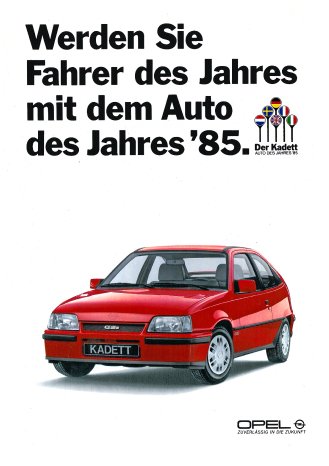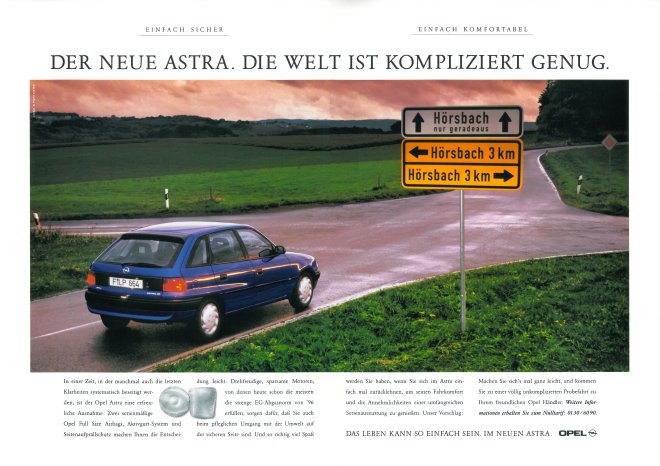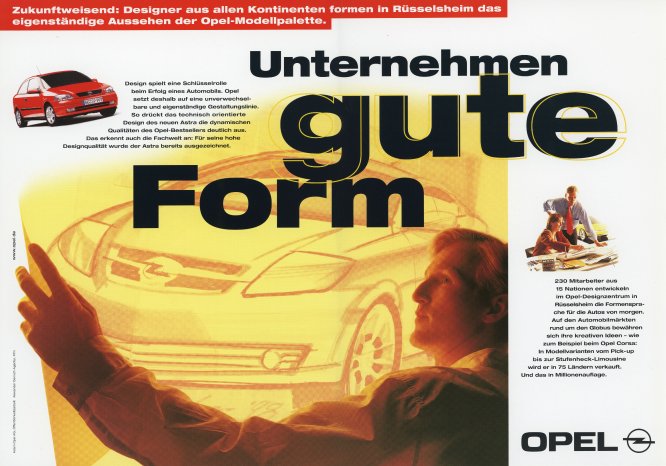- Opel founds affordable compact class in 1936 with Kadett
- “Wirtschaftswunder” German economic miracle powered by Opel Kadett A
- Kadett-successor Astra F bestselling Opel model so far with 4.13 million units
- 11 generations of Kadett and Astra repeatedly bring innovations to compact market
- All-new Astra’s bold and pure design and electrification begin a new era
The concept of a market for compact cars developed so strongly during the years of the “Wirtschaftswunder” German economic miracle that Opel, in 1962, built an all-new production plant especially for the Kadett in Bochum, Germany.
The second key to success was never to rest on your laurels. Each new generation brought more innovations, such as the water-cooled, four-cylinder engine of the Kadett A (1962), the sensationally aerodynamic bodywork of the Kadett E (1984) or the adaptive forward lighting (AFL) of the Astra H (2004).
Now history is repeating itself again. With the bold and pure design as well as the state-of-the-art technology of the 2021 Astra – including plug-in hybrid electric drive – Opel is starting another new era in the compact class.
1936 Kadett features revolutionary all-steel unitary body
Opel’s tradition as a defining force in the compact class began with the original Opel Kadett in 1936. After the Opel Olympia, the first German car produced with an all-steel unitary body, the Kadett also employed this revolutionary technology.
Compared to the classic wooden body mounted on a frame chassis, the unitary construction method possesses numerous advantages, such as lower weight for improved performance and fuel consumption, and higher safety, thanks to the stability of the passenger cell and the lower centre of gravity.
The advantages of the Kadett A (1962-1965) were its lively 1.0-litre engine, big boot and lots of interior space for passengers. The recipe for success also included an ingredient that a certain rival could never hope to match. The fuel filler cap was on the outside, not in the boot, which was reserved for the easy stowage of luggage. “You’ll never sniff petrol in the boot” quipped the ad-copywriters in a tongue-in-cheek message aimed in the direction of Wolfsburg.
The compact class at Opel entered another new era with the Kadett D (1979-1984). Instead of rear-wheel drive, this new model featured front-wheel drive “made by Opel” for the first time. The space-saving, transverse powertrain layout enabled packaging that was a blueprint for roominess. Although the newcomer was shorter than its predecessor, the inside was bigger and offered considerably more space than many of the Kadett’s rivals.
Astra F embodies 1990s Zeitgeist, brings new name to Opel’s compact model
When the Opel Astra F made its world premiere in 1991, the world was undergoing great change. The seventh generation of Opel’s compact model embodied the Zeitgeist of the era like no other automobile. The new model acquired not only a new name – Astra, like its British Vauxhall stablemate – but also a wealth of newly developed safety systems. The high level of recyclability demonstrated a focus on environmental compatibility.
The Astra F was not only a vehicle of great change, it remains Opel’s bestselling model so far: The German carmaker produced around 4.13 million units between 1991 and 1997.
All-new sixth-generation Astra takes bold step into future
With the all-new Astra, Opel now stands once again on the threshold of a new era in the compact class. CO2 is the new currency of the automobile industry, therefore electro-mobility is key to reducing greenhouse gas emissions. The new Astra therefore plays a vital role in the electrification of the brand’s model portfolio – the 11th generation of Opel’s compact class model will be available for the first time as a plug-in hybrid with two levels of power output.
The new Astra is also a powerful design statement for Opel, the next step in the execution of the German carmaker’s new bold and pure design philosophy. The Vizor front face, muscular wheel arches and taut surfacing give expression to a sporty and confident personality; inside, the driver-orientated Pure Panel cockpit will bring a new emotional experience.
Eighty-five years after the original Kadett, in the firm tradition of its predecessors, the all-new Opel Astra takes a bold step into the future.
1936-1940: Opel Kadett – Winner of hearts and minds
The speedy four-seater could do nearly 100 km/h and it did not take long to find its way into the hearts of the public. It also found favor with the press: “As the first test drives have confirmed, the Kadett is certainly not an ordinary vehicle in this price range,” wrote a German newspaper, “Braunschweiger Tageszeitung”, on December 5, 1936. The chassis with Dubonnet independent front suspension and leaf-spring rear axle stemmed from the Opel Olympia, and the L-head four-cylinder gray cast-iron engine was taken from the Opel P4. It generated 23 hp from a displacement of 1,073 cm3. The advantages of taking the engineering from a modular system also played a key part in the low price of the car. Just like its big brother the Olympia, which it resembles in appearance, the Kadett is a modern car. Harmonious proportions with a hatchback and integrated headlights are characteristic. In 1938 a major mid-cycle enhancement added a new radiator mask in late art deco style – experts today count this model as an intermediate generation.
From Kadett to Admiral
“Just as agile, versatile and obedient to all the driver’s commands as you would expect of a career-making cadet,” wrote the Cologne newspaper, “Kölnische Zeitung”, in 1936 about Opel’s new car. Its name, “Kadett” was as new as the segment. Up until the debut of the first Astra in 1991, Opel’s compact class line would use this name for more than five decades. The company launched two more ranges with names stemming from the German navy, Admiral and Kapitän, in 1937 and 1938.
Unitary body and ultra-modern production
After the Olympia, which was the first German series-production vehicle to feature a unitary all-steel body, the first Kadett also had a unitary body. There are many advantages of this construction compared with the classic wooden body-on frame. For instance, the driving performance and fuel consumption benefit from the car’s low weight, while the safety level is higher thanks to the rigid passenger cell and the lower center of gravity. The self-supporting structure opened the door to a new production method that is still commonly used today: The body and the powertrain (engine, transmission, axles) are “married” on the production line with the help of hydraulic elevators. The Kadett was manufactured by Opel, in Rüsselsheim. In 1936, the company operated the most modern drop forge in the world and the largest body press shop in Europe.
Fresh design and innovative technology
Headlamps integrated into the body instead of the ancient separate lamp units gave the Kadett a fresh appearance. Not surprising, because it was Opel that first made modern car design popular in Europe. Back in the 1930s, shortly after the company’s integration into the General Motors Group, a design department was established in Rüsselsheim on the initiative of GM chief designer, Harley Earl.
Plenty of car for your money: As long ago as 1936, the first Kadett offered the same good value for money and thus democratized luxury. This has become typical of the Opel brand. Details such as hydraulic four-wheel brakes, direction indicator, draft-free ventilation through a triangular hinged window and “dustproof” trunk accessible from the inside were at that time very unusual for this category of car – in the Kadett, they were all standard.
The Kadett was the first Opel model to feature an in-house developed downdraft carburetor with a so-called venturi tube. In this tube, named after the Italian physicist, Giovanni Battista Venturi (1746–1822), the fuel is mixed into the incoming air ahead of the throttle valve. The venturi tube is a smooth-walled piece of tubing with a constriction in it. When air flows through the tube and passes the constricted section, it has to flow faster at this point than in the other sections. As a result, a vacuum is produced (as on the upper side of an aircraft wing). At the constricted point is a tube filled with gasoline. The fuel is sucked in by the vacuum in the venturi tube and dragged along.
The post-war generations: From Kadett A to the current Astra
1962-1965: Opel Kadett A – For the economic miracle
A large trunk and plenty of room for four people plus a new, lively engine and low maintenance costs made up the recipe for success for the Kadett A. Opel built nearly 650,000 of them from 1962 to 1965. The contours of the two-door notchback model were businesslike and modern. The beltline was low down, the panoramic windows made for good visibility and a decorative strip running along the side accentuated the stretched form. Front fenders tapered off into the headlamps and the rear ends were shaped like fins. The interior space deeply impressed owners of conventional small cars. The trunk was a real baggage compartment and the fuel tank cap was outside! “Opel Kadett, in brief: O.K.,” wrote Opel’s advertising team, unable to also resist a dig at their competitors in Wolfsburg. “You never have the smell of gasoline in the trunk,” they said with a wink. With its modern, water-cooled front engine, the Kadett had another major design advantage over the Beetle. The 993 cm3 four-cylinder unit developed 40 hp and, from March 1963, also powered the new Kadett Caravan.
1965-1973: Opel Kadett B – “Das Auto”
B follows A, and in 1965 a new series replaced the first model. The new version was more than four meters long and thus a good deal bigger than its predecessor. As for its fashionable figure – the designers were inspired by their colleagues overseas. The flat sloping rear was reminiscent of the fastback models popular in the USA. In 1966, “Automobil Illustrierte” noted: “You can almost see the power and speed before you hear the engine.” Not only was the length stepped up – so, too, was the horsepower. Opel engineers enlarged the bore of the four-cylinder unit by 3 mm. The basic 1,078 cm3 unit developed 45 hp. Also available was a higher-compression 1.1 S engine with 55 hp.
The Kadett was a fast success, with over 2.6 million units produced from September 1965 to July 1973. And its success was certainly not limited to its country of birth. In 1966, the export quota reached 50 percent as customers from 120 countries around the globe snatched up the Kadett.
1973-1979: Opel Kadett C – The athlete
The Kadett C family had many faces: a smart family car, a chic second car with a practical rear tailgate, or a competitive sports coupé in war paint. A total of 1.7 million of them were built between 1973 and 1979. The rear-wheel drive Kadett C made its debut in August 1973 with a cleanly designed body and a new double-wishbone front axle. Characteristic design features included a flat radiator grille, an engine hood with the brand’s signature crease, and a front apron in spoiler form. “The Kadett not only drives exceptionally well, but is also conscientiously designed and cleanly made. It requires little maintenance, is repair-friendly and economical to run,” praised the car-testing experts at “auto motor und sport” in the 20/73 edition. The powerful GT/E debuted at the 1975 IAA. Its 1.9-liter engine with Bosch L-Jetronic injection produced 105 hp and propelled the mere 900 kilograms of Kadett to a top speed of 184 km/h.
1979-1984: Opel Kadett D – The front-wheel drive car
The fourth generation of the post-war Kadett introduced a new compact class era at Opel. At the 1979 IAA, Opel’s first front-wheel drive model debuted as the modern-looking Kadett D. The packaging was truly convincing. Although the newcomer was 126 mm shorter than its predecessor at 3,998 mm, it sported a longer interior and offered significantly more space than many of its rivals. But it was not only the powertrain layout and the chassis with a torsion-beam axle at the rear that broke with tradition: the Kadett was given a new 1.3-liter OHC engine that generated 60 or 75 hp. The revolution continued with the body variants. In addition to the spacious station wagon with a load volume of up to 1,425 liters, Opel offered only fastback versions. In January 1983 the sporty Kadett GTE followed, with a top speed of 187 km/h and equipped with a 1.8-liter four-cylinder engine that developed 115 hp. Other technical modifications included a tighter and lower chassis, new steering dampers and internally ventilated disk brakes at the front. A total of 2.1 million Kadett D units were produced from 1979 to 1984.
1984-1991: Opel Kadett E – The aerodynamics world champion
The second front-wheel drive Kadett, built from 1984 to 1991, was named “Car of the Year 1984” and was an absolute winner. Selling a grand total of 3,779,289 cars in its lifetime, it was the bestselling Opel so far and a real aerodynamics world champion. Opel engineers certainly hit the jackpot in 1984. Based on the engineering of its predecessor but with a completely new hatchback design, the Kadett E was set for a stellar career. With a drag coefficient of 0.39, the Kadett D was already best in its class, but this figure paled in comparison to its successor. After spending 1,200 hours of fine-tuning in the wind tunnel, the E model achieved a sensational 0.32. The sporty GSi, with a Cd of 0.30 and aerodynamic drag of 0.57 m2, was the most aerodynamic hatchback in the world. Buyers took to the new form after only a few months, paving the way for a new success story that provided the Kadett E with 625,000 new registrations across Europe in 1987. By this time, the station wagon version had already climbed to the top of its class. From the fall of 1985, a notchback variant was again in the line-up, the first since the Kadett C. Moreover, the sporty GSi variant set targets its rivals struggled to match. When the legendary 16-valve engine arrived on the scene in 1987, it left its competitors eating dust.
1991-1997: Opel Astra F – The bestseller
Some 4.13 million units of the Astra F were built between 1991 and 1997, making it the bestselling Opel model ever. Development work focused on combining modern design with more interior space, enhanced comfort and greater emphasis on environmental protection.
The successor to the Kadett assumed the name of its British sister model (the fourth generation of the Kadett had been sold in the UK as the Vauxhall Astra since 1980). Opel also launched a safety offensive with its new star. All Astras offered an active belt system with tensioners on the front seats belts, height-adjustable belts and seat ramps as well as side protection including double steel tube reinforcements in all the doors. For the first time, all engines came with catalytic converters.
1998-2004: Opel Astra G – The versatile car
In spring 1998, the Astra with coupé-like design was offered from the start as a three- and five-door hatchback and as a station wagon. A notchback sedan, coupé and convertible were added later. Progressive independent design, dynamic chassis and powertrain technology as well as nearly twice the torsional and flexural rigidity of its predecessor were just some of the characteristics of the completely new, second-generation Opel Astra. The new model’s fully galvanized body played a key role in its high value retention. Active safety was enhanced with a 30 percent increase in the light output of the transparent H7 halogen headlamps and the completely redesigned Dynamic Safety (DSA) chassis. It combined comfort with agile and safe handling, even under full load. The wheelbase was around ten centimeters longer, enabling more interior space, in particular more rear knee room in the rear and a larger trunk volume of 370 liters.
2004-2009: Opel Astra H – The mighty car
With twelve engines ranging from 90 to 240 hp and seven body variants, the choice of models for the Astra H that sold over 2.7 million units was exceptional. When it was launched in March 2004, the third-generation Opel Astra boasted a progressive design, high driving dynamics and plenty of technical innovations, immediately winning numerous comparison tests in specialist automotive publications. The Astra’s technological highlights included the adaptive IDSPlus chassis system with electronic Continuous Damping Control (CDC), otherwise only found in luxury class and exclusive sports cars, as well as Adaptive Forward Lighting (AFL) headlamp system with dynamic curve light. The Astra also boasted high levels of safety. The bestseller was considered one of the safest sedans in the compact class.
2009–2015: Opel Astra J – The designer piece
Sculptural artistry combined with German precision – the Opel Astra J not only embodies the brand’s new design philosophy, it also assists drivers with a range of technologies that already made an important contribution to the success of the best-selling mid-class Insignia. The “Opel Eye” camera system recognizes traffic signs and informs the driver of speed limits or overtaking bans. It also warns drivers if they are in danger of veering out of lane. With the AFL+ headlamp system, the Astra can look around the corner and, if necessary, even automatically dim the lights or switch to high beam. With a chassis that can be enhanced by the FlexRide adaptive technology, the current Astra can play out its dynamic talents to the full. A new rear axle construction guarantees driving fun, improved handling and maximum comfort, with a Watt’s link incorporated to improve wheel control. Astra drivers also benefit from a new generation of front seats developed according to the latest findings in safety ergonomics and are awarded with the seal of quality from the independent medical and back experts of the AGR (Aktion Gesunder Rücken e.V. / campaign for healthy backs) organization.
2015-2021: Opel Astra K – Car of the Year 2016
Up to 200 kg lighter, roomier inside despite a reduced overall length, and more efficient thanks to exclusive use of new-generation engines – the new Opel Astra is a quantum leap in development and is crowned European Car of the Year 2016. The compact car is once again available as a hatchback and as a spacious Sports Tourer.
Continuing a tradition that started with the Astra G, the new Astra K also stands out with its lighting technology. It is the first car to introduce the adaptive, full LED matrix technology Intelli-Lux LED® – so far reserved for luxury and premium models from higher classes – into the compact segment. New generation driver assistant systems also comprise Traffic Sign Assistant, Lane Keep Assist with Lane Departure Warning along with Following Distance Indication and Forward Collision Alert with Collision Imminent Braking. In addition, the new Astra K once again delivers on wellness with newly engineered ergonomic front seats, certified by the AGR organization once more, being introduced. These new front seats can even be enhanced with a ventilation and massage function!
From 2021: Opel Astra L – The electrifying challenger
With the all-new Astra, the German carmaker is now opening the next chapter: for the first time, the compact class model is available with electric drive. Opel will offer the new Astra as a plug-in hybrid in two performance levels. In addition, there are versions with highly efficient petrol and diesel engines in combination with friction-optimised six-speed manual and eight-speed automatic transmissions. The new Opel Astra is also a design statement for the German brand. Dynamic as never before, with sheer, taut surfaces, detoxed of superfluous elements and with the new brand face – the Opel Vizor. With the next compact class generation, Opel shows that the Astra is ready to define a new era.


